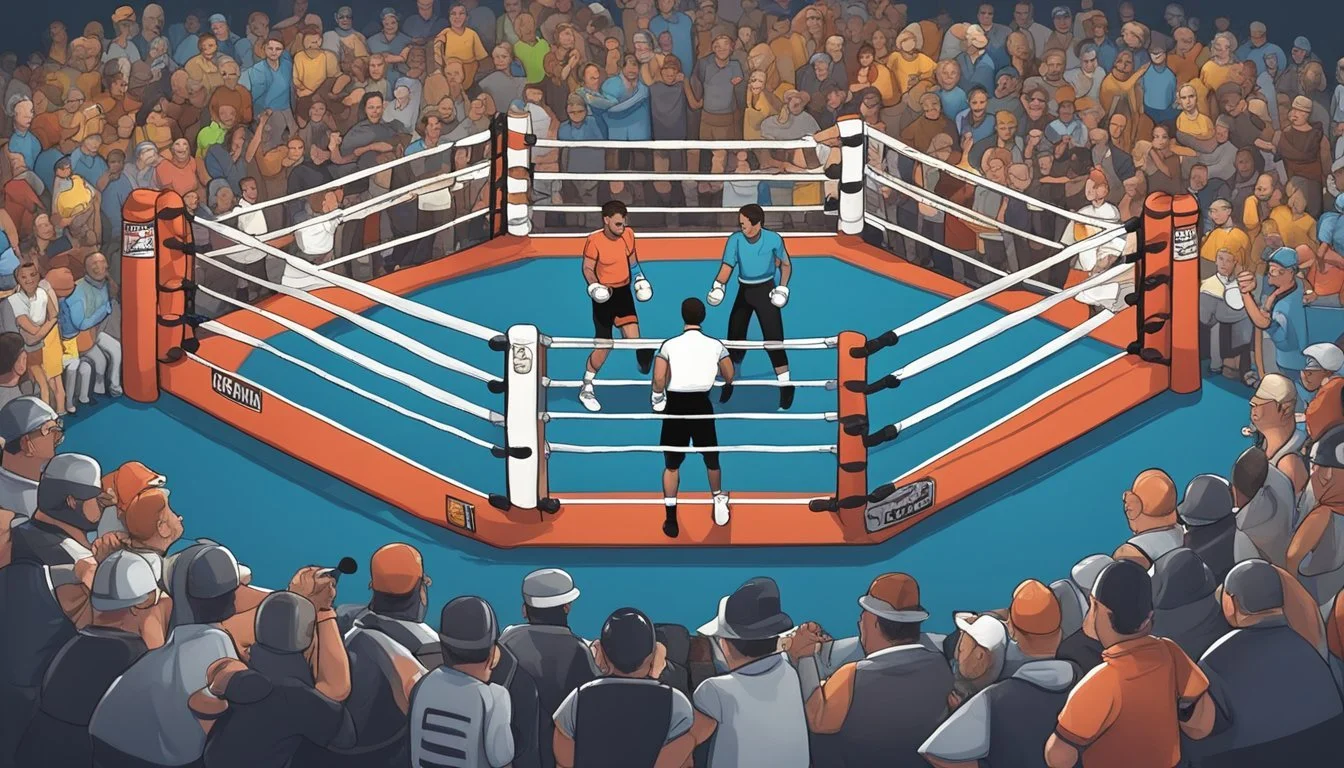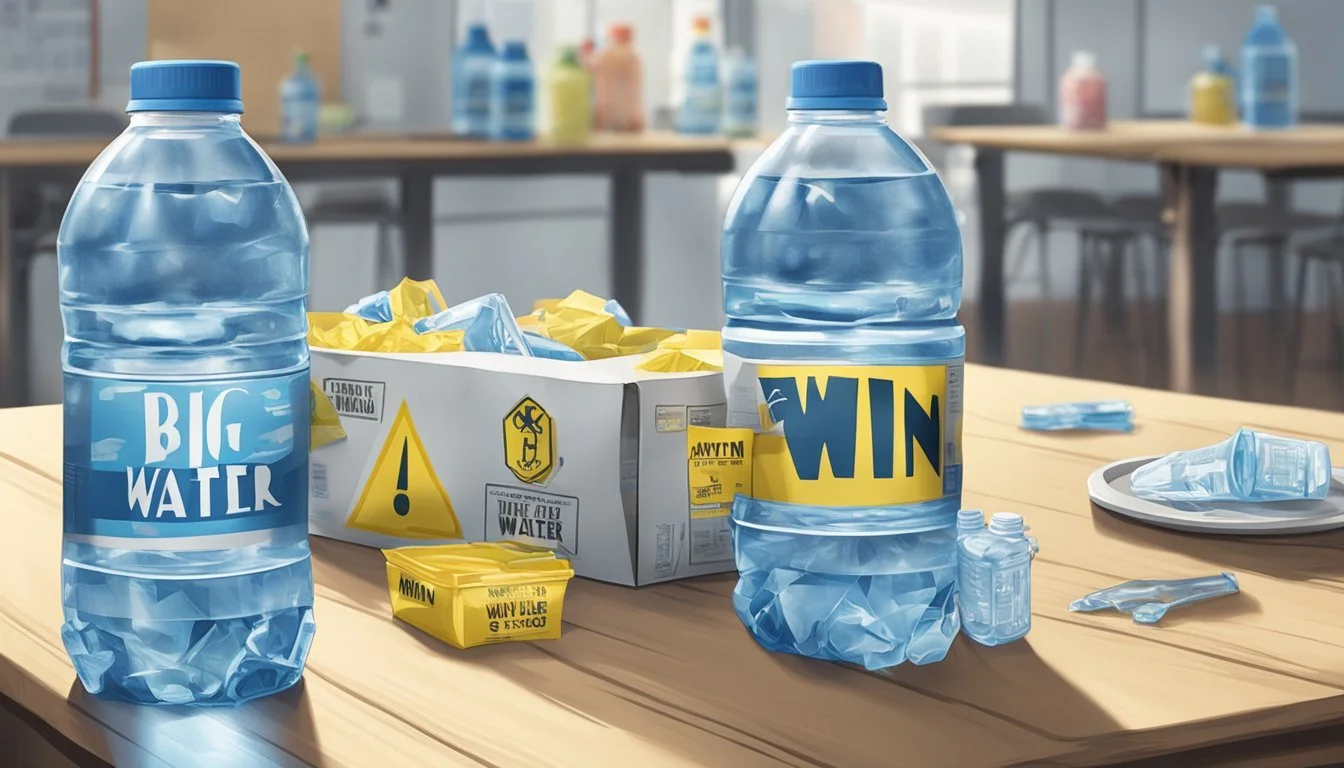Boxed Water vs. Big Win
Which Bottled Water is Better? A Comparative Analysis
Choosing the right bottled water can be perplexing, especially with the rise of environmentally friendly options. Boxed Water, one of the pioneers in sustainable packaging, offers a compelling choice by utilizing paper-based cartons to reduce plastic waste. Big Win, a conventional bottled water brand, is widely available and often preferred for its convenience and consistent taste.
Boxed Water stands out due to its eco-friendly credentials, boasting a significant reduction in ozone depletion, global warming potential, and overall environmental impact compared to traditional plastic and aluminum bottles. Despite these benefits, Boxed Water's sustainability is also contingent on local recycling capabilities, which can vary by location.
Big Win provides a reliable and accessible option for many consumers, with large jugs minimizing single-use plastic packaging. This makes it a practical choice when boxed options are not optimal. Ultimately, the decision between Boxed Water and Big Win hinges on your priorities—whether environmental impact or convenience is more important to your lifestyle.
Understanding Boxed and Bottled Water
Boxed water and bottled water differ in various ways, including their environmental impact, packaging, and material composition. Both aim to provide clean drinking water but come with unique characteristics and advantages.
Definition of Boxed Water
Boxed water is water that comes packaged in a carton rather than a traditional plastic bottle. The cartons are typically made of sustainable materials like paper, aluminum, and plant-based plastics.
Key components:
Paper: Makes up the majority of the carton (usually around 74%).
Aluminum: Used minimally (about 1%) to provide an additional layer of protection.
Plastic: Ensures the carton is waterproof and sealable (approximately 25%).
Boxed Water Is Better is one of the notable brands in this sector, often praised for its eco-friendly packaging and reduced environmental footprint when compared to traditional plastic water bottles. The focus is on reducing the impact on ozone depletion and global warming potential.
Overview of Bottled Water
Bottled water is water packaged in plastic or glass bottles. This has been a common method for providing portable drinking water for decades.
Key aspects:
Plastic: Most bottled waters use single-use plastic bottles made of polyethylene terephthalate (PET).
Glass: Some high-end or specialty bottled waters come in glass bottles, which are often reusable but come with a higher carbon footprint due to their weight.
Bottled water companies focus on providing purified, mineral, or spring water in a convenient format. However, the environmental impact of plastic waste has led to increasing scrutiny. Recycling helps mitigate some problems, but plastic bottles still contribute significantly to environmental pollution if not managed properly.
Both options have their pros and cons, with boxed water positioned as a more sustainable choice.
Comparative Analysis
This section evaluates Boxed Water and Big Win on materials, taste, and their impact on the environment, providing a detailed and clear comparison.
Materials and Production
Boxed Water utilizes cartons made from 92% plant-based materials, with 74% of that being paper sourced from renewable resources. This significantly reduces reliance on single-use plastic bottles. The cap is also plant-based, further enhancing its sustainability.
Big Win, on the other hand, predominantly uses plastic, which is less environmentally friendly. The company offers some products with plant-based plastic, addressing rising concerns over plastic waste, but the overall impact is less commendable compared to Boxed Water's approach.
Taste and Purity
Both Boxed Water and Big Win prioritize taste and purity. Boxed Water claims a clean, crisp taste, attributed to their multi-step purification process which removes impurities. The use of a box is said to maintain the water's freshness longer compared to plastic bottles.
Big Win markets its water as equally pure and refreshing. They employ advanced filtration methods to ensure high purity levels, but the difference in taste might be subtle, influenced by the packaging material. Consumers report a slight plastic taste in Big Win’s products, likely due to the plastic bottles.
Environmental Impact
Boxed Water offers substantial environmental benefits. Its packaging minimizes the carbon footprint through the use of renewable content and supports recyclability. Plant-based materials lessen dependency on fossil fuels, making the brand a favorite among eco-conscious consumers.
Big Win's environmental strategy includes measures to reduce plastic usage. Despite these efforts, the reliance on single-use plastic remains significant. While the introduction of plant-based plastic in some of their bottles is a step forward, it is not as impactful as Boxed Water's holistic approach. Therefore, while both brands make attempts to be more sustainable, Boxed Water has a more robust and comprehensive environmental strategy.
Health and Safety Considerations
When evaluating the health and safety of Boxed Water and Big Win bottled water, it is important to consider the presence of chemical contaminants and the quality of hydration each product offers. Each brand follows distinct purification processes and uses different materials to ensure safe consumption.
Chemical Contaminants
Chemical contaminants in water can pose significant risks to health. Boxed Water and Big Win have processes to reduce contaminants. Boxed Water uses ultraviolet light, carbon filtration, and reverse osmosis to remove impurities. In contrast, Big Win emphasizes its purified water claims, though specific filtering methods are less detailed.
Boxed Water's packaging is crafted from sustainable materials such as sustainable paper, aluminum, and plant-based plastics. These materials contribute to the effort to create a BPA-free product, reducing the risk of bisphenol A exposure. On the other hand, consumers should also consider the presence of microplastics, which can be a concern in bottled water. Reports have less emphasized this risk in Boxed Water, hinting at a lower likelihood compared to conventional plastic bottles.
Hydration and Water Quality
The quality of hydration provided by bottled water is a paramount consideration. Boxed Water is noted for its crispness and refreshing taste, indicating a high level of purity which contributes to effective hydration. The product has a neutral pH and doesn’t include additives such as fluoride or chlorine.
Big Win bottled water might vary in taste, potentially containing silicon minerals or additives to improve flavor. While this can enhance hydration, it is essential to evaluate the water's alkalinity. Some consumers prefer alkaline water, which is naturally alkalinized and can be beneficial for those seeking to balance their body's pH levels.
Both brands make efforts to ensure their water is purified and safe, with Boxed Water focusing heavily on environmental angles and Big Win emphasizing traditional bottled water standards.
Sustainability and Environmental Stewardship
The choice between Boxed Water and Big Win bottled water hinges primarily on their environmental impact. Examining the packaging materials and recycling options can offer insights into the overall ecological footprint of each brand.
Packaging and the Environment
Boxed Water uses cartons composed predominantly of paper, sourced from sustainable forests. These cartons are about 74% paper, 1% aluminum, and 25% plastic film, designed to keep the water sealed and the carton waterproof. This paper-based approach aims to minimize the reliance on single-use plastics, which are notorious for contributing to global warming and pollution.
Big Win, on the other hand, typically uses plastic bottles made from PET (Polyethylene Terephthalate). While this plastic is recyclable, its production and potential for ending up in landfills or oceans make it less eco-friendly compared to the renewable resources used by Boxed Water. The environmental benefits of Boxed Water's packaging, such as reduced ozone depletion and acidification, align with eco-friendly practices and sustainability goals.
Recycling and Waste Management
Boxed Water focuses on easy recyclability and waste management. The cartons can be recycled in facilities that process mixed materials like paper and plastic. Moreover, Boxed Water emphasizes reducing waste through its partnership with recycling programs, ensuring that its packaging is disposed of responsibly.
In contrast, Big Win's plastic bottles, while recyclable, depend heavily on consumer participation in recycling programs. Unfortunately, many plastic bottles fail to be recycled and contribute to waste accumulation. Boxed Water's approach, supported by FSC-certified materials, underscores a commitment to recycling that mitigates environmental stress, whereas Big Win bottling requires consistent and proper consumer recycling to achieve similar results.
Market and Consumer Choices
Consumers today are increasingly driven by environmental concerns and brand reputation. Companies like Boxed Water Is Better and Big Win strive to meet these consumer expectations through innovation and branding strategies.
Brand Analysis
Boxed Water Is Better stands out with its commitment to sustainability, using cartons that are predominantly made from paper and renewable materials. The brand positions itself as an eco-friendly alternative to traditional plastic bottled waters like Dasani and Aquafina.
Big Win, although not as focused on sustainability, offers a competitive price point that appeals to budget-conscious consumers. Both brands leverage unique selling points, with Boxed Water highlighting its environmental mission and Big Win emphasizing affordability and accessibility.
The role of branding cannot be understated. Brands like Just Water and Flow Alkaline Spring Water also capture market share by associating themselves with sustainable practices, quality, and a trendy lifestyle. Such positioning helps these brands attract environmentally-conscious consumers who are willing to pay a premium for greener options.
Consumer Preferences and Trends
Environmental concerns play a pivotal role in shaping consumer behavior. Americans are increasingly shifting towards sustainable products as awareness of plastic pollution grows. Brands like Boxed Water and Just Water benefit from this trend by offering eco-friendly packaging options.
Many consumers prefer products associated with sustainability and health benefits. This trend is evident in the growing popularity of brands like Hint and Poland Spring, which often market their products based on purity and natural sources.
Airlines such as Alaska Airlines also contribute to this trend by featuring more eco-friendly water options, targeting travelers who value sustainability. As a result, companies are innovating both their product lines and packaging to meet these evolving consumer demands.
In conclusion, the bottled water market is greatly influenced by consumer preferences for eco-friendly and affordable options, with branding and environmental impact playing a significant role in purchasing decisions.
Water for a Different World
In a world increasingly affected by global warming, the consumption of water in eco-friendly packaging has grown in prominence. Understanding how different packaging methods impact the environment is crucial.
The Role of Water in a Changing Climate
Water consumption and its packaging are closely tied to climate change. Traditional plastic water bottles contribute significantly to environmental damage. The production process of these bottles releases greenhouse gases, accentuating global warming.
Boxed water, on the other hand, aims to reduce this impact. The use of paper cartons, plant-based plastics, and aluminum in Boxed Water packaging shifts the paradigm. This packaging method is designed to be more sustainable.
Tap water remains an optimal choice for reducing carbon footprints. Utilizing municipal water systems cuts down on waste and resource consumption. Despite the convenience of bottled and boxed water, tap water is often safer and less impactful on the environment.
Future of Water Consumption
Consumers are becoming more environmentally conscious, influencing the market for water products. Boxed water presents itself as an eco-friendly alternative to traditional bottled water. By focusing on sustainable materials and recycling, it reduces its ecological footprint.
Awareness of greenwashing tactics is essential. Some products may claim eco-friendliness without substantiated benefits. It's important for consumers to scrutinize these claims to ensure they contribute to real environmental benefits.
The shift towards environmentally conscious water consumption is evident. As people seek greener alternatives, the market is likely to see innovations and stricter regulations ensuring products genuinely benefit the planet. The future will likely witness increased reliance on tap water and truly sustainable packaging solutions.




